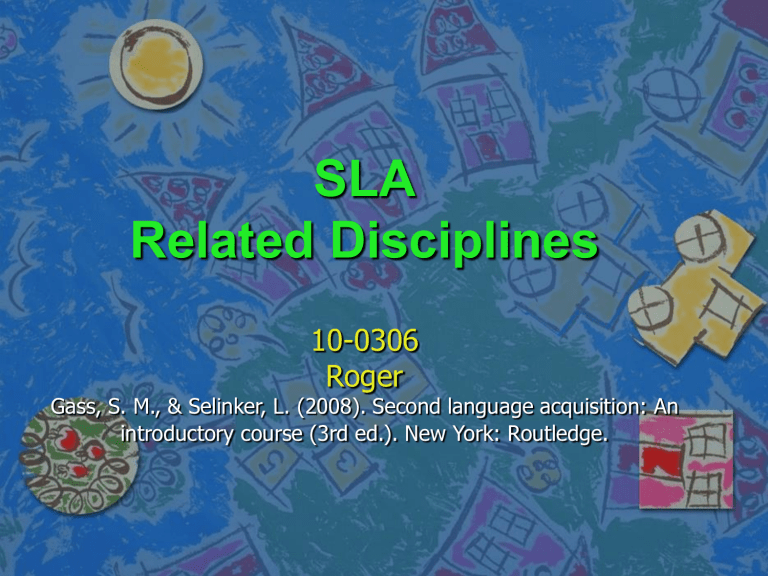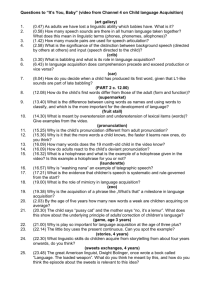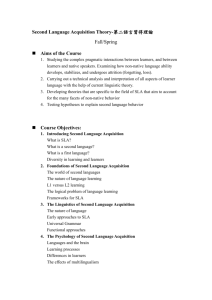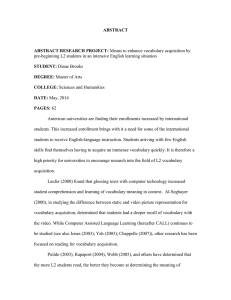SLA Related Disciplines 10-0306 Roger

SLA
Related Disciplines
10-0306
Roger
Gass, S. M., & Selinker, L. (2008). Second language acquisition: An introductory course (3rd ed.). New York: Routledge.
L1 Acquisition
Difference b/w L1 and L2 acquisition
Process of developing L1
– Smiling and Cooing
– Babbling
– Word Stage
– Sounds and Pronunciation
– Syntax
– Morphology
L1 Acquisition
Babbling
– What is babbling?
( baba , dada , mama )
– Meaning attached?
(see Figure 2.3-2.5)
– Intonation means everything
– How can parents tell their infants ’ needs?
Words — how did your kids learn words?
– One-Word Stage
– Two-Word Stage
– Overextend vs. Underuse meaning
(p. 34)
– What about Chinese as L1?
L1 Acquisition
Sounds and Pronunciation
– Hearing vs. Being able to Pronounce
(ex. p.34)
– What about Chinese as L1?
Syntax
(about 2 yrs old)
– Content Words vs. Function Words
– Mean Length of Utterance (MLU)
(see Table 2.2)
Morphology
– Morpheme order in kids’ speech
(see Table 2.3)
– Wh -words
(Foster-Cohen, 1999) and no
(Clark & Clark, 1977;
Foss & Hakes, 1978) come first
– Overgeneralization
– Overview on p. 37
Bilingual Acquisition
What’s the difference between SLA and
Bilingual Acquisition?
(see Table 2.1)
Strengths of being a bilingual
(vs. monolingual)
– Sensitive to communicative needs
– Cognitive advantages
– Greater grammar and meaning sense
Code Switching b/w languages
Heritage Language Acquisition
What is Heritage Language? How does it differ from SL?
– Not one’s primary Lang
(Polinsky, in press)
– Lang used at home
(Valdes, 2001b)
– Lang hasn’t been completely acquired
(Polinsky, in press)
– HSpers are usually dominant in the SL.
– HSpers have subtly different knowledge from L2 Lers of that Lang.
L3 Acquisition / Multilingualism
What is Third Language Acquisition
(L3)?
Is it different from SLA?
Is it different from HLA?
What is
lingua franca
? Does it occur when you are speaking a L2 or L3?
Discussions
Questions on p. 37
2
4
5
7




